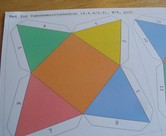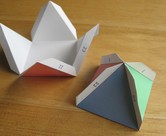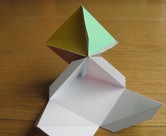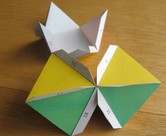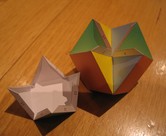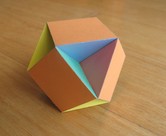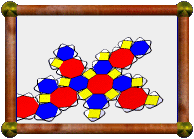

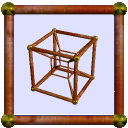
| Home > Gallery > My Models > Uniform Polyhedra > Cubohemioctahedron | |
| Prev (Octahemioctahedron) | Next (Small Cubicuboctahedron) |
Cubohemioctahedron |
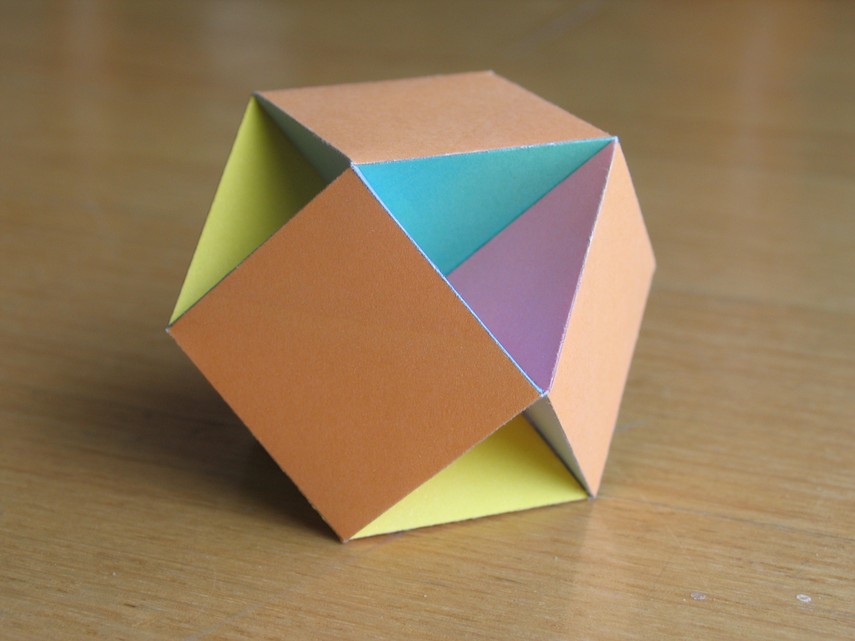
| Like or comment on facebook |
- Vertex description: 4.6.4/3.6
- Faces: 10
- Edges: 24
- Vertices: 12
- External facelets: 30
- Dual: Hexahemioctacron (infinite)
- Name breakdown:
- Cubo-: 6 faces (squares) lie parallel to those of a cube
- -hemi-octa-: Hemi = through the centre of model. Octa = faces (hexagons) parallel to an octahedron, but only half as many (4) because they're hemi
A uniform polyhedron whose faces consist of 6 squares (orange) and 4 hexagons (each a different colour). It is a faceting of the cuboctahedron, that is, it shares the same vertices. It also shares the same vertices with the Octahemioctahedron. In fact these all share the same edges too.
Nets for this model were printed from Great Stella using a colour inkjet printer onto white paper. I think the result looks better than those printed with a colour laser printer. The colour doesn't crack at the edges so much.
| Home > Gallery > My Models > Uniform Polyhedra > Cubohemioctahedron | |
| Prev (Octahemioctahedron) | Next (Small Cubicuboctahedron) |
